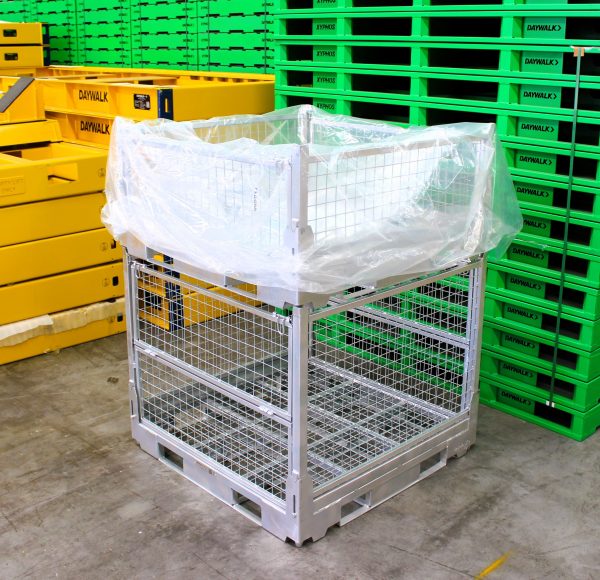What is a pallet?
The pallet is a flat structure that’s seen a rise in prominence in the early twentieth century in tandem with the ubiquity of transport equipment like the crane and the forklift.
There are three types, sorted by their manufacture material: steel pallets, plastic pallets, and wooden pallets. Of the three, the wooden pallet is the oldest and has the most history. Pallets sold on the market are typically made of wood, with hardwood pallets being the favourite option.
However, alternatives such as plastic pallets and steel pallets are also available, as they meet requirements and functions that wooden pallets may not be able to meet. For example, steel pallets are preferred for long term dry storage, high-stacking loads, and the transport and storage of military ammunition. Meanwhile, plastic pallets are lighter in weight, easily sanitised, fire retardant, and odour resistant.
Pallets are used to provide stability for transportation and storage purposes. Goods and products are placed on the pallet, where they are then either strapped down or lashed onto to secure the goods in place. The pallets are then used to transport the goods using forklifts, front loaders, or cranes. Pallets come in many sizes and can be customised to fit.
The pallet originated from the skid, which is a rudimentary structure of planks set on top of short beams. However, skids do not have supporting planks at the bottom, which can make them unstable. The addition of planks on the bottom of the skid, along with some modifications, led to the invention of the modern day pallet. The earliest patent for a pallet is the U.S. patent attributed to Howard T. Hallowell, for what is named as the “Lift Truck Platform”.
In recent years, pallets have been accessorised to develop functional versatility. Accessories such as vertical beams, pallet collars, pallet cages, and pallet jacks have been designed and manufactured to meet demands for additional functions for pallets. For example, the pallet cage converts the pallet into a storage container, while the pallet collar creates compartments and provide base support for the transport of goods.
The process of manufacturing pallets is straightforward. Steel and plastic pallets can be fabricated from start to finish with automated processes, though some steps will require supervision.
Meanwhile, for wooden pallets, material selection weeds out damaged wood from the good ones. These selected wood are then cut into planks and beams (plates and blocks). Once the wood has been cut, they are then moved on to the treatment process, where the wood is handled for heat processing (to keep the wood from expanding) and termite protection.
After this process, the wood is then prepped for notching and nailing the wood into pallets; this process can be automated with minimal supervision. The now-finished pallets undergo a final inspection and any last treatments before they’re sent off to be sold.
The wooden pallet is the most readily available option of the types currently in the market. It’s also considerably cheaper than plastic and steel. Because wood is recyclable, discarded or damaged pallets are often repurposed for crafts and carpentry by enterprising persons and hobbyists.
The pallet is an example of simplicity at its finest – despite its minimal design, it has withstood the test of time by reliably fulfilling a crucial purpose. The pallet, for the near and distant future, is here to stay.





